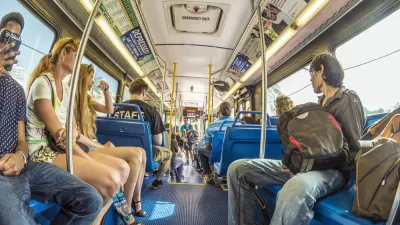It’s great that global warming is finally getting its day in the media spotlight. But with all the buzz about carbon footprints and carbon offsets, I wonder whether the average American now believes that carbon dioxide is the only pollutant that we need to worry about?
It's great that global warming is finally getting its day in the media spotlight. But with all the buzz about carbon footprints and carbon offsets, I wonder whether the average American now believes that carbon dioxide is the only pollutant that we need to worry about?
The attention given to carbon sequestration is perhaps the most worrisome: it implies that we can continue our fossil fuel burning ways because of the promise of largely untested technologies that will scrub carbon emissions before they enter the atmosphere. This false hope is driving the recent bipartisan push behind liquefied coal (coal converted to automotive fuel), the dirtiest "alternative" energy source around. Beware of the Senate and House bills S. 154 and and H.R. 370, which provide billions in subsidies for new coal-to-liquid plants. They enjoy support from prominent Democrats and Republicans who are pandering to their coal-rich home states. Unfortunately, even if carbon sequestration becomes feasible, liquefied coal would still be dirtier and more carbon intensive than today's gasoline.
In a Newsweek interview, Governor Arnold Schwarzenegger suggested that carbon sequestration technologies could be a pathway to guilt-free SUVs: "It's like a box that you put in your car and it takes 40 to 50 percent of the greenhouse gases out of your fuel ". That sounds encouraging, but what about all of the other tailpipe pollutants that are responsible for California's massive air quality problems?
Then there are the proposed synthetic trees -- 1000-foot towers that would suck carbon dioxide out of the atmosphere. Carbon capture and storage may well be necessary to stabilize global CO2 concentrations, but only if it is combined with aggressive reductions in fossil fuel use and a switch to truly green sources of energy like wind and decentralized solar.
The burning of any organic material -- tobacco, wood, food, coal, oil and gas -- releases a long list of harmful pollutants. Here's just a sample of the byproducts emitted by power plants and automobiles:
Particulate Matter (linked to heart and lung disease)
Sulfur Dioxide
Nitrogen Dioxide
Mercury
Lead
Polyaromatic Hydrocarbons (known carcinogens)
Volatile Organic Compounds like Benzene (known carcinogens)
PCBs (known carcinogens)
Dioxins (suspected carcinogens)
1,3 Butadiene (probable carcinogen)
Removing pollutants from inherently dirty energy sources is a tall order, and toxic air contaminants were reason enough to abandon fossil fuels decades ago. Carbon sequestration is a bandaid solution that will do little to address the broad range of challenges associated with our addiction to coal and oil.

Alabama: Trump Terminates Settlements for Black Communities Harmed By Raw Sewage
Trump deemed the landmark civil rights agreement “illegal DEI and environmental justice policy.”

Study: Maui’s Plan to Convert Vacation Rentals to Long-Term Housing Could Cause Nearly $1 Billion Economic Loss
The plan would reduce visitor accommodation by 25% resulting in 1,900 jobs lost.

Planetizen Federal Action Tracker
A weekly monitor of how Trump’s orders and actions are impacting planners and planning in America.

Wind Energy on the Rise Despite Federal Policy Reversal
The Trump administration is revoking federal support for renewable energy, but demand for new projects continues unabated.

Passengers Flock to Caltrain After Electrification
The new electric trains are running faster and more reliably, leading to strong ridership growth on the Bay Area rail system.

Texas Churches Rally Behind ‘Yes in God’s Back Yard’ Legislation
Religious leaders want the state to reduce zoning regulations to streamline leasing church-owned land to housing developers.
Urban Design for Planners 1: Software Tools
This six-course series explores essential urban design concepts using open source software and equips planners with the tools they need to participate fully in the urban design process.
Planning for Universal Design
Learn the tools for implementing Universal Design in planning regulations.
Caltrans
Smith Gee Studio
Institute for Housing and Urban Development Studies (IHS)
City of Grandview
Harvard GSD Executive Education
Toledo-Lucas County Plan Commissions
Salt Lake City
NYU Wagner Graduate School of Public Service





























